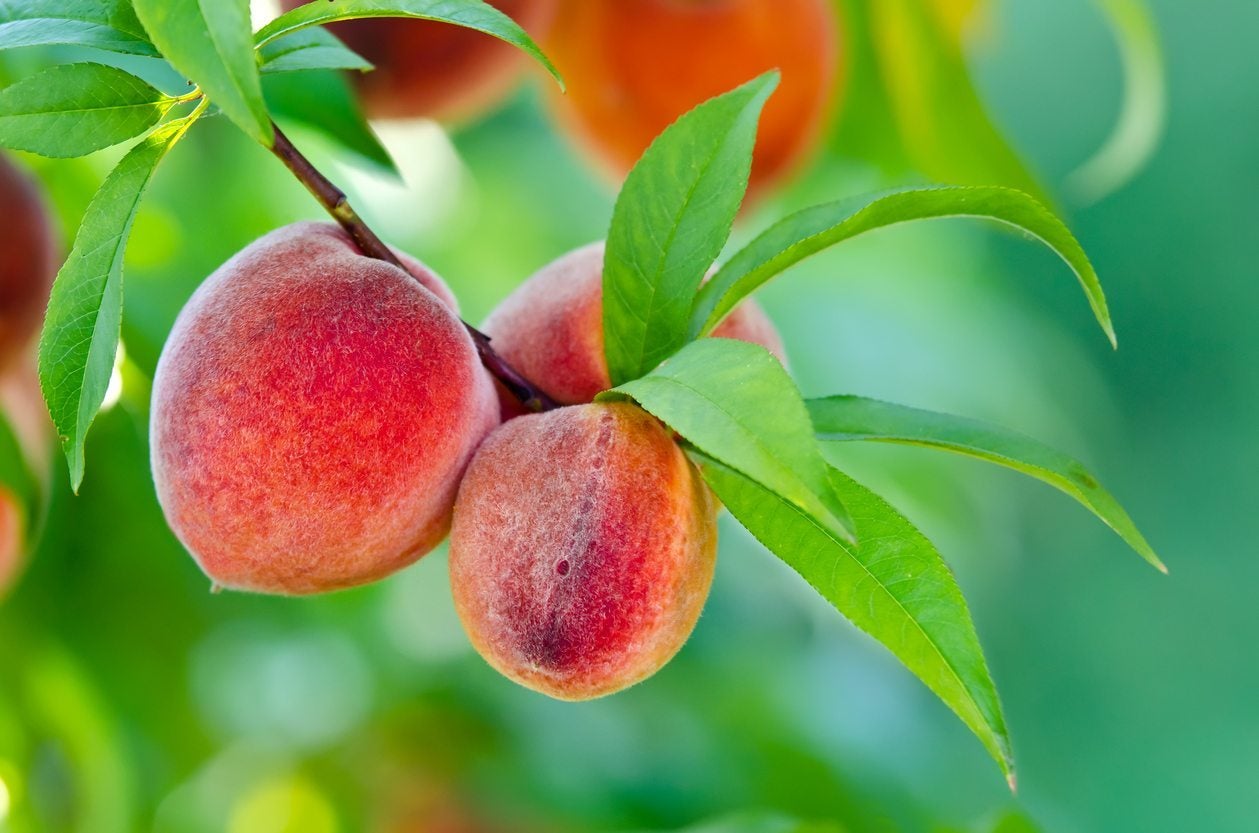Tree Girdling Technique: Learn About Girdling For Fruit Production


Girdling a tree is often on the list of actions to avoid in your garden. While stripping bark off a tree trunk all the way around is likely to kill the tree, you can use a specific tree girdling technique to increase fruit yield in a few species. Girdling for fruit production is a frequently used technique on peach and nectarine trees. Should you girdle fruit trees? Read on for more information about tree girdling techniques.
What is Tree Girdling?
Tree girdling for fruit production is an accepted practice in commercial peach and nectarine production. Girdling involves cutting out a thin strip of bark from around the trunk or branches. You have to use a special girdling knife and make sure you don’t cut deeper than the cambium layer, the layer of wood just under the bark. This type of girdling interrupts the flow of carbohydrates down the tree, making more food available for fruit growth. The technique should only be used for certain fruit trees.
Why Should You Girdle Fruit Trees?
Don’t start girdling fruit trees randomly or without learning the proper tree girdling technique. Girdling the wrong trees or the wrong way can kill a tree quickly. Experts recommend girdling a tree to enhance fruit production only for two types of fruit trees. These are peach and nectarine trees. Girdling for fruit production can result in bigger peaches and nectarines, more fruit per tree, and an earlier harvest. In fact, you may be able to start harvesting fruit 10 days earlier than if you don’t use this tree girdling technique. Although many home gardeners do not perform girdling for fruit production, it is a standard practice for commercial producers. You can try these tree girdling techniques without damaging your trees if you proceed with caution.
Tree Girdling Techniques
In general, this form of girdling is done about four to eight weeks prior to harvest. Earlier varieties may need to be done four weeks after blooming, which is about four weeks before their normal harvest. Also, it is advised that you not thin peach or nectarine fruit and girdle the trees simultaneously. Instead, allow at least four or five days between the two. You’ll need to use special tree girdling knives if you are girdling for fruit production. The knives remove a very thin strip of bark. You only want to girdle tree branches that are at least 2 inches (5 cm.) in diameter where they attach to the tree trunk. Cut the girdle in an “S” shape. The beginning and ending cuts should never be connected, but finish about an inch (2.5 cm.) apart. Do not girdle trees until they are four years old or older. Pick your timing carefully. You should perform the tree girdling technique before pit-hardening during April and May (in the U.S.).
Sign up for the Gardening Know How newsletter today and receive a free copy of our e-book "How to Grow Delicious Tomatoes".

Teo Spengler is a master gardener and a docent at the San Francisco Botanical Garden, where she hosts public tours. She has studied horticulture and written about nature, trees, plants, and gardening for more than two decades, following a career as an attorney and legal writer. Her extended family includes some 30 houseplants and hundreds of outdoor plants, including 250 trees, which are her main passion. Spengler currently splits her life between San Francisco and the French Basque Country, though she was raised in Alaska, giving her experience of gardening in a range of climates.